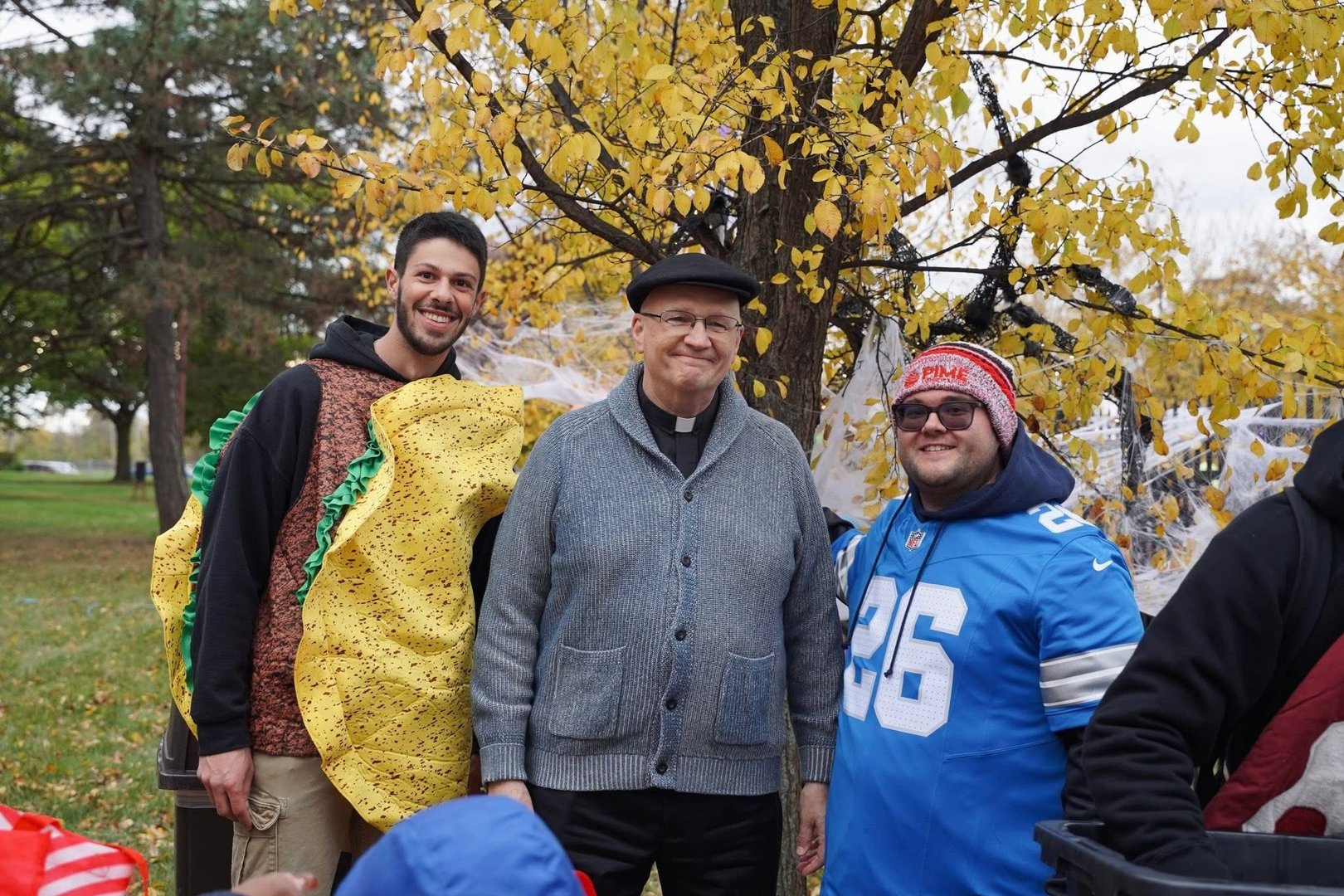(OSV News) -- Among the more alarming prognostications of researchers in recent years -- at least for those involved with higher education -- is the term "demographic cliff."
It has been predicted since Americans began to have fewer babies beginning in 2007, the start of the two-year Great Recession. Feeling economic pressure, parents increasingly decided children were an expense they couldn't afford. This year, the babies born in 2007 turn 18, the age teenagers typically graduate high school and at the age at which most college students enter college.
From 2007 to 2023, the U.S. experienced a 17% decrease in the number of births, from 4.32 million in 2007 to 3.6 million in 2023. And while the falling American birth rate increased slightly after the COVID-19 pandemic, it has not recovered, accordingf to the Centers for Disease Control and Prevention.
The number of high school graduates in America is projected to fall to 3.4 million in 2041 -- an overall 13% decrease -- as reported by the Texas A&M University System. A drop of approximately 7.4% is projected to occur between 2026 and 2030, with a second drop from 2033 to 2039 of almost 9%.
"The current environment, with its declining demographics, is challenging for all of higher education, especially for the smaller, tuition-driven institutions," said Donna M. Carroll, president of the Washington-based Association of Catholic Colleges and Universities, or ACCU. "The Northeast and Midwest are the hardest hit regions, which is where the majority of Catholic colleges and universities are located."
From 2016-2024, 21 Catholic colleges announced their closure or merger with another institution. In 2025, several more have made the same decision, including Siena Heights University in Adrian, Michigan, which announced June 30 that it will shutter at the conclusion of the 2025-2026 academic year.
The Hechinger Report, a nonprofit education news outlet, described 2024 as a devastating year for higher education, with one university or college per week on average announcing plans to close or merge, a number twice as high as in 2023.
More than half of the country's 79 nonprofit colleges and universities that have closed or merged since 2020 -- or announced that they would close or merge -- were religiously affiliated, according to Hechinger.
In addition to the demographic cliff, Carroll cited "continuing public confidence issues and market changes as well as the impact of current politics on student aid, international student visas, access for undocumented students, grants, etc. -- all together creating a difficult context for planning and budgeting," she said. "Different institutions have a different mix of these pressures, and more."
The specific mission of Catholic colleges also makes them susceptible to turbulent external forces, Carroll said.
"What makes Catholic higher education distinctive is also what makes many of our institutions more vulnerable: that is, a commitment to educate the poor and marginalized -- which equates with tight financial margins," she said.
"As ministries of the church," continued Carroll, "many Catholic institutions were initially established to serve immigrant families, and continue to educate large numbers of Pell eligible, first-generation-to-college students."
That significant mission has encouraged a certain resilience, "but, in some cases," said Carroll, "there are just too many factors in flux for an institution to be sustainable."
John M. Grondelski -- a former associate academic dean of the School of Theology at Seton Hall University in South Orange, New Jersey, and who held a professorship for nearly seven years at St. John's University in the Staten Island borough of New York -- said he doesn't see a quick demographic rebound on the horizon.
"Put bluntly: The kids to fill the seats were never born. And there have been no recoveries: People are still marrying later than ever and deferring parenthood even further," said Grondelski, who has written widely about the demographic cliff and related matters. "So, there's no replacement cohort coming to make up enrollment numbers."
He shared a rather bleak prediction with OSV News.
"I really doubt any Catholic college or university today with fewer than 2,250-2,500 students will survive. The sheer costs of running a college just impose that," he said. "The incentive to mark up prices in response to student loan possibilities also provides a perverse counter-incentive to containing costs."
"And, unlike the Ivies to which some … Catholic college leaders aspire, few of our institutions have deep endowments to invest and sustain operating costs long-term," Grondelski added.
Two small Catholic colleges with Benedictine roots have, however, so far challenged that dismal outlook.
Steve Johnson, director of marketing and communications at Benedictine College in Atchison, Kansas, said Benedictine anticipated the oncoming enrollment decline.
"I can tell you that we have been aware of and preparing for the demographic cliff for years," he said. "We have worked to expand our reach, image and awareness -- and have been very successful, bringing in record freshman classes over the last three years. This fall, we are expecting the largest incoming freshman class in our history, with more than 700 for the first time."
More than 2,000 full-time undergraduates from 48 states study at Benedictine, an academic community sponsored by the monks of St. Benedict's Abbey and the sisters of Mount St. Scholastica Monastery. Annual undergraduate tuition for 2025-2026 is $36,750.
"We started taking steps as long as 10 years ago," Johnson said, noting Benedictine added athletic programs, worked on internet search engine optimization, started several academic centers, formalized an honors program and increased social media output. It also boasts the No. 1 nursing school in the state for the past three years and is constructing a new library that will house a Center for Constitutional Liberty.
"Overall, we have been able to move the college to a ‘first choice' institution and have developed a strong national brand identity," he said.
Belmont Abbey College in Belmont, North Carolina, has also been resilient -- for very specific reasons, said Rolando Rivas, associate vice president for marketing and communications.
"Unique to Belmont Abbey College is that Charlotte is one of only two markets in the country that is not experiencing the demographic cliff. Essentially, our metro area has grown fast enough to overcome the birth dearth of the Great Recession," he explained. "We enter this period as one of the most affordable Newman Colleges, and we are well-positioned to weather the storm."
"Newman Colleges" are reviewed by the Cardinal Newman Society and chosen for their faithfulness and commitment to Catholic values.
Owned and operated by Benedictine monks who settled in the area in 1876, Belmont Abbey has a student body of more than 1,600 and 2025-2026 annual undergraduate tuition of $21,500.
"The data on the demographic cliff is based on families likely to send their kids to college," Rivas said. "In other words, the individuals who stopped having babies were white-middle-to upper-middle-class families. If you look at Catholic families who attend Mass at least weekly, there is a growing pool of students. If you add first-generation Hispanic families, the pool of available Catholic students is even larger," he said. "Our issue as Newman Colleges remains the same -- both of these groups do not have the economic resources to send their children to private colleges."
But as ACCU's Carroll suggested, sometimes there are just too many factors at work to ensure sustainability -- and such is the case for Fontbonne University, a 100-plus-year-old Catholic college in St. Louis, which will close at the end of this summer.
Fontbonne had around 900 undergraduates and graduate students combined in 2023, an enrollment drop of 70% over the past 15 years.
"At this point, there are more colleges with more availability and capacity than there are students who need that capacity," said Nancy Blattner, Fontbonne's president. "And that's going to cause part of the structure to collapse, I think."
The university -- which has educated some 20,000 students since 1923 -- is named for St. John Fontbonne (Mother Jeanne Fontbonne), who refounded the Congregation of the Sisters of St. Joseph following the French Revolution, miraculously escaping the guillotine after five of her fellow sisters perished.
Blattner -- who has spent some 45 years in higher education, including as president of the Dominican-rooted Caldwell University in New Jersey -- shared that she has witnessed many pressures against growing Fontbonne's enrollment.
In addition to the demographic cliff, she cited student fears of debt, economic uncertainty, family dynamics and changes in ideas about the value of higher education.
"I see that there's a tremendous shift in public perception about the value of higher education these days," Blattner said. "I think in part, it's because there are a number of very good jobs that high school students can get with vocational training or with on-the-job training."
A growing number of Catholic trade schools -- including the College of St. Joseph the Worker in Steubenville, Ohio, and Harmel Academy of the Trades in Grand Rapids, Michigan -- present students with career paths other than those offered by traditional colleges.
Fontbonne employed various strategies, including expansion of its sports program and fitness center, additional academic programs and sites, a refurbished campus and a new four-year bachelor of science nursing program.
In the end, it wasn't enough, but Blattner is still able to strike a positive note.
"The legacy of Fontbonne lives in its people," she said.
As long as there are students that have gone to school here, our alumni base, the people who worked here, our board members, the values that we talk about on this campus -- respect, integrity, community, excellence, justice, service and faith -- as long as people allow those values to inform the decisions they make in their lives," Blattner said, "the legacy of Fontbonne will continue."









